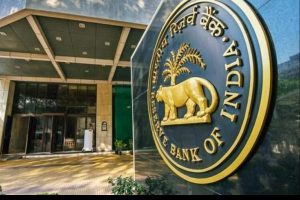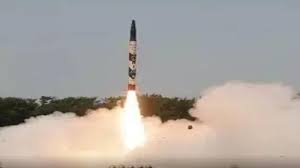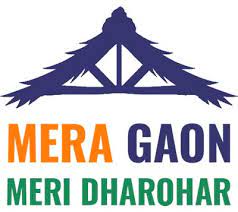Today’s Current Affairs: 12th Dec 2023 for UPSC IAS exams, State PSC exams, SSC CGL, State SSC, RRB, Railways, Banking Exam & IBPS, etc
Table of Contents
PM Vishwakarma Scheme : Data

The PM Vishwakarma Scheme, launched by the Centre, has received over 21 lakh applications in two and a half months, data from the Ministry of Skill Development and Entrepreneurship (MSDE) show.
- PM Vishwakarma Scheme is a central sector scheme launched by the Ministry of Micro, Small, and Medium Enterprises, which offers services like market linkage support, skill training, and incentives for digital transactions to artisans and craftspeople engaged in specified trades.
- Time period: Five years (FY 2023-24 to FY 2027-28).
- Aim is to strengthen and nurture the Guru-Shishya parampara, or family-based practice of traditional skills by artisans and craftspeople working with their hands and tools.
- The scheme also aims at improving the quality as well as the reach of the products and services of artisans and craftspeople and to ensure that the Vishwakarmas are integrated with the domestic and global value chains.
- It is available for rural and urban artisans and craftsmen across India.
- It covers 18 traditional crafts such as Boat Maker; Armourer; Blacksmith; Hammer and Tool Kit Maker; etc.
- Five lakh families will be covered in the first year and 30 lakh families over five years.
Pangalokha Wildlife Sanctuary : Royal Bengal Tiger Was Spotted

A Royal Bengal Tiger was spotted in Pangalokha Wildlife Sanctuary in Sikkim at an altitude of 3,640 metre.
- The Royal Bengal Tiger was captured by trap cameras of a team of Bombay Natural History Society (BNHS) which is conducting a study in the sanctuary in collaboration with the Sikkim Forest department.
- It was under a larger project called “Conservation and Use of Five Wetlands in three Himalayan States to secure Habitats of Birds Migrating within the Central Asian Flyway (CAF).”
- This project was sanctioned under the National Mission on Himalayan Studies (NMHS), aims to protect and conserve wetland sites in Ladakh, Himachal Pradesh, and Sikkim.
- Pangalokha Wildlife Sanctuary is located in East Sikkim district and connected to the forests of Bhutan and Neora Valley National Park in West Bengal.
- The Pangolakha Range, extending below the Chola Range, separates Sikkim from Bhutan.
Budgett’s Frog:

Researchers from the Indian Institute of Science’s (IISc.) molecular biophysics unit in a study have identified that peptides (short protein) produced from Budgett’s frog can combat enzymes of disease causing pathogens.
- The peptides (short proteins) produced from the skin of amphibians have long been studied because of their ability to counter unfavourable conditions in the environment, including harmful pathogens.
- The frog-secreted peptide inhibited two key enzymes called subtilisin carlsberg and proteinase K., produced by pathogens.
- These enzymes play a pivotal role in promoting infections by degrading specific protective proteins of the infected person.
Budgett’s frog:
- They are highly intelligent and very aggressive.
- When frightened, they inflate themselves, stand up on their short legs and if this doesn’t deter the potential predator, they lunge at them with an open huge mouth followed up by a shrill shriek.
- During the dry season, Budgett’s frogs remain in burrows they dig in the bottoms of pools of water.
- While in the burrow, they will shed several layers of skin from which to form a waterproof cocoon that will keep the frog moist.
- They use their exceptional night vision and their sensitivity to movement when hunting food.
- They are found near or in permanent or seasonal bodies of water in Paraguay, Argentina and Bolivia.
- Conservation Status
- IUCN Red List: Least Concern
Key findings of the research
Climate Change Performance Index:

India has ascended to the 7th position in this year’s Climate Change Performance Index (CCPI).
Key highlights:
- Denmark retained the top spot with a score of 75.59 per cent. Estonia and the Philippines occupied the second and third ranks respectively, with 72.07 and 70.70.
- Saudi Arabia was at the bottom — 67th — in the performance list, while the host country United Arab Emirates occupied the 65th position.
- India receives a high ranking in the GHG Emissions and Energy Use categories, but a medium in Climate Policy and Renewable Energy, as in the previous year.
- India is trying to meet its National Determined Contribution (NDC), with clear long-term policies in place that focus on promoting renewable energy and providing financial support for domestic manufacturing of renewable energy components.
- India has relatively high taxes on petrol and diesel, which are intended to act as carbon taxes.
Climate Change Performance Index:
- It is an instrument to enable transparency in national and international climate politics.
- It is published by Germanwatch, the New Climate Institute and the Climate Action Network annually.
- It was first time published in 2005.
- The CCPI uses a standardized framework to compare the climate performance of 63 countries and the EU, which together account for over 90% of global greenhouse gas emissions.
YUVAi Initiative:

The Ministry of Electronics and IT has said that the program- ‘YUVAi- Youth for Unnati and Vikas with AI’ will be featured at the Global Partnership on Artificial Intelligence (GPAI) Summit.
- YUVAi Initiative is a collaborative initiative of National e-Governance Division (NeGD), Ministry of Electronics & Information Technology (MeitY), Government of India and Intel India.
- This programme, designed to equip the youth with essential Artificial Intelligence skills, has garnered attention for its innovative approach and commitment to enabling a future-ready workforce.
- It is aimed to foster a deeper understanding of AI, to enable school students from class 8 to 12 across the nation with AI skills and empower them to become human-centric designers and users of AI.
Monetary Policy Committee Meeting:

The Reserve Bank of India (RBI) in its bimonthly Monetary Policy Committee (MPC) Meeting has retained benchmark interest rates unchanged for the 5th time in a row.
- The key repo rate has been paused for five consecutive reviews at 6.5%.
- Repo rate is the rate at which the central bank of a country (RBI) lends money to commercial banks in the event of any shortfall of funds. Here, the central bank purchases the security.
- Standing Deposit Facility (SDF): 6.25 % The SDF is a liquidity window through which the RBI will give banks an option to park excess liquidity with it.
- Marginal Standing Facility Rate: 6.75% MSF is a window for scheduled banks to borrow overnight from the RBI in an emergency situation when interbank liquidity dries up completely.
- Cash Reserve Ratio (CRR): 4.50% ,Under CRR, the commercial banks have to hold a certain minimum amount of deposit (NDTL) as reserves with the central bank.
- Statutory Liquidity Ratio (SLR): 18.00%, SLR is the minimum percentage of deposits that a commercial bank has to maintain in the form of liquid cash, gold or other securities.
- The GDP growth projection for 2023-24 was raised to 7% from earlier 6.5%, buoyed by a robust 7.6% growth in the second quarter of 2023-24 FY.
- The Consumer Price Index (CPI) based inflation forecast for the fiscal year 2023-24 has been retained at 5.4%.
Pradhan Mantri Janjati Adivasi Nyaya Maha Abhiyan Scheme:

The Ministry of Tribal Affairs has brought to light the ambitious Pradhan Mantri-Janjati Adivasi Nyaya Maha Abhiyan (PM-JANMAN) Scheme.
- It aimed at uplifting Particularly Vulnerable Tribal Groups (PVTGs), this initiative carries the potential to address their unique challenges and provide essential infrastructure for a brighter future.
- PM JANMAN is a government scheme that aims to bring tribal communities into the mainstream.
- The scheme (comprising Central Sector and Centrally Sponsored Schemes) will be implemented by the Ministry of Tribal Affairs, in collaboration with the State governments and the PVTG communities.
- The scheme will concentrate on 11 critical interventions overseen by 9 line Ministries, ensuring the implementation of existing schemes in villages inhabited by PVTGs.
- It encompasses various sectors, including safe housing under the PM-AWAS Scheme, access to clean drinking water, improved healthcare, education, nutrition, road and telecommunications connectivity, as well as opportunities for sustainable livelihoods.
- The plan also includes the establishment of Van Dhan Vikas Kendras for trading in forest produce, off-grid solar power systems for 1 lakh households, and solar street lights.
- The scheme is expected to enhance the quality of life and well-being of the PVTGs, by addressing their multiple and intersecting forms of discrimination and exclusion, and by recognizing and valuing their unique and valuable contribution to national and global development.
Gram Manchitra : Ministry Of Panchayat Raj

The Ministry of Panchayati Raj introduced “Gram Manchitra,” a Geographic Information System (GIS) app.
- Additionally, the Ministry launched “mActionSoft,” a mobile-based solution for geo-tagging project assets.
- The primary goal of Gram Manchitra is to encourage spatial planning initiatives by Gram Panchayats, leveraging the capabilities of geo-spatial technology.
- The app supports the Gram Panchayat Development Plan (GPDP) by aiding decision-making.
- Unified GeoSpatial Platform: Gram Manchitra provides a single and unified platform, facilitating the visualisation of developmental projects and activities at the Gram Panchayat level.
- It enables Gram Panchayats to plan and execute developmental works across different sectors, fostering a holistic approach to rural development.
- Tools include project site identification, asset tracking, cost estimation, and project impact assessment.
- mActionSoft is a mobile-based solution, plays a crucial role in capturing geo-tagged photos with GPS coordinates for works with asset outputs.
- Assets undergo geo-tagging at three stages: before the commencement of work, during the work, and upon completion.
- This establishes a comprehensive repository of information on various works related to natural resource management, water harvesting, sanitation, agriculture, and more.
- Geo-Tagging: Panchayats geotag assets created under finance commission funds with photographs, ensuring transparency and accountability.
- The assets geo-tagged using mActionSoft seamlessly integrate with Gram Manchitra, enriching the visualisation of developmental works in Gram Panchayats.
LeadIT Summit 2023:

At the Leadership Group for Industry Transition (LeadIT) Summit 2023 hosted by India and Sweden at the Conference of Parties (COP 28) in the United Arab Emirates, the Ministry of Environment, Forest and Climate Change announced the three pillars of the second phase of LeadIT (2.0).
Key Highlights of the Second Phase of LeadIT:
- It Facilitate the creation of policies and regulations backing an inclusive industry transition through public-private partnerships.
- It Mobilise resources, support knowledge-sharing, and accelerate pathways to achieve net-zero industry emissions by 2050.
- LeadIT Pillars:
- Global Forum for a Just and Equitable Industry Transition:
- Ensuring continuous dialogue and engagement between governments and industry.
- This pillar is dedicated to sustaining LeadIT’s engagement with multilateral groups (e.g., UN Climate Action, United Nations Framework Convention on Climate Change (UNFCCC) COP presidencies), facilitating knowledge sharing among members, and vigilantly monitoring the transition’s pace.
- Technology Transfer and Co-development:
- This pillar is dedicated to facilitating business-to-business technology transfer and building national institutional capacity for innovation.
- Industry Transition Partnerships:
- The LeadIT Secretariat aids members in creating industry transition partnerships, supporting emerging markets and developing economies in their pursuit of green industrial transitions.
- These partnerships involve mapping, coordinating, and strengthening technical and financial international assistance to enhance effectiveness.
- The ultimate goal is to establish enabling conditions for a pipeline of bankable low-carbon industrial projects.
- Global Forum for a Just and Equitable Industry Transition:
Training Launch Of Short-Range Ballistic Missile Agni-1:

Training launch of Short-Range Ballistic Missile ‘Agni-1’ was carried out successfully from APJ Abdul Kalam Island, Odisha.
- The launch, carried out under the aegis of the Strategic Forces Command, successfully validated all operational and technical parameters.
- The Agni-1 is a Short-Range Ballistic Missile (SRBM) developed by India as part of its Agni series of missiles.
- It is the first missile in the Agni series and is designed to be a strategic weapon capable of carrying a nuclear payload.
- The Agni-1 is primarily intended for use as a deterrent against potential adversaries and is known for its quick response time.
- It is the first variant of the Agni series missiles under Integrated Guided Missile Development Program (IGMDP).
- The Agni-1 is a single-stage, solid-fueled missile with a range of around 700 to around 1200 kilometers and can carry a payload of 1,000 kg, making it a short-range ballistic missile.
- It has the capability to carry both conventional and nuclear warheads.
- The solid-fuel propulsion system enhances its operational flexibility and reduces launch preparation time.
Mera Gaon Meri Dharohar Project:

The Ministry for Culture has decided to map and document all villages under the Mera Gaon, Meri Dharohar (MGMD) Programme.
- This National Mission on Cultural Mapping is conducted in coordination with Indira Gandhi National Centre for the Arts (IGNCA) under the Ministry of Culture.
- A web portal on MGMD has also been launched. The MGMD seeks to compile comprehensive information detailing the life, history, and ethos of Indian villages and to make the same available to virtual and real-time visitors.
- Under the MGMD, information is collected under seven broad categories such as Arts and Crafts Village, Ecologically Oriented Village etc.
Indian Art, Architecture & Design Biennale 2023:

The first Indian Art, Architecture & Design Biennale (IAADB) 2023 was inaugurated at the Red Fort in Delhi.
- The event includes the inauguration of the Aatmanirbhar Bharat Centre for Design (ABCD) and the student Biennale, Samunnati.
- The IAADB aims to celebrate India’s diverse heritage and vibrant culture, providing a platform for artists, architects, designers, and the public to engage in a cultural dialogue.
- The Aatmanirbhar Bharat Centre for Design is expected to promote unique and rare crafts of India, fostering innovation and collaboration between artisans and designers.
Exercise VINBAX-2023:

A contingent of 45 Indian Armed Forces personnel has arrived in Hanoi, Vietnam, to participate in the fourth edition of the Joint Military Exercise VINBAX-2023.
- It will be Running from December 11th to 21st
- This exercise aims to strengthen collaborative partnerships, promote interoperability, and share best practices between India and Vietnam.
- The exercise, conducted as a Command Post Exercise cum Field Training Exercise, focuses on the deployment and employment of an Engineer Company and a Medical Team.
- It aims to exchange ideas on modern construction methods for roads, culverts, helipads, ammunition shelters, and observation posts in operational areas.
- The participating contingents will jointly rehearse tactics, techniques, and procedures related to combat engineering and combat medical tasks.
- The exercise will include technical military operations scenarios, simulating the worldwide deployment of United Nations contingents.




